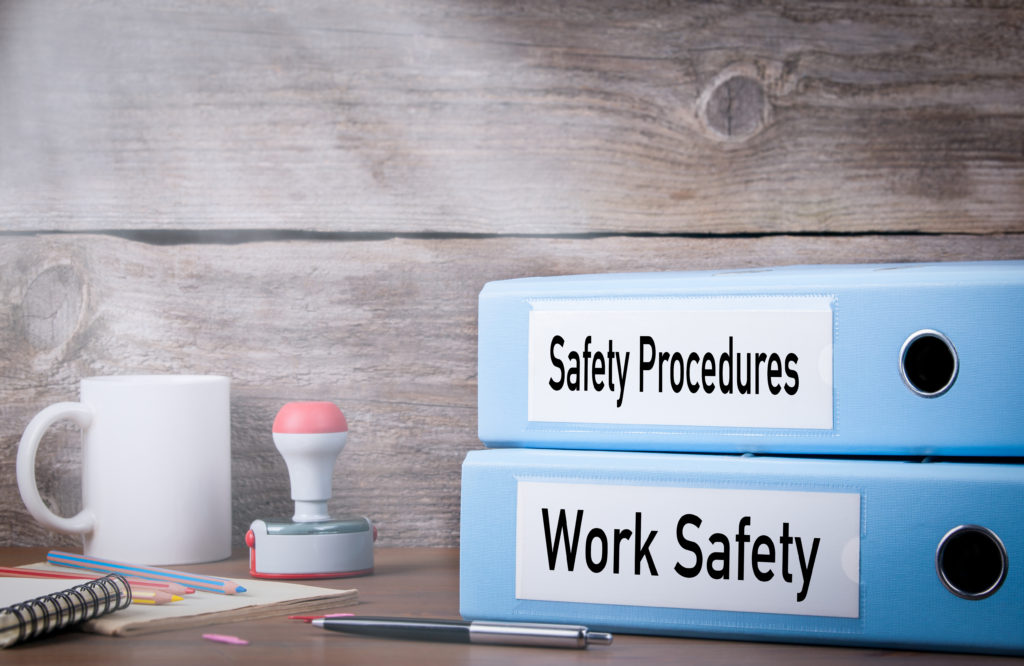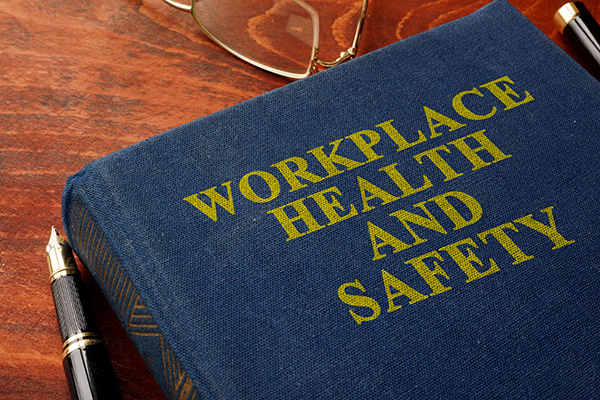 Every business and organisation is responsible for protecting the health and safety of their people, especially on the field. If you don’t pay attention to your people’s safety needs in the workplace, you might face trouble that will put your business at risk.
Every business and organisation is responsible for protecting the health and safety of their people, especially on the field. If you don’t pay attention to your people’s safety needs in the workplace, you might face trouble that will put your business at risk.
That is why the Work Health and Safety (WHS) legislation requires every establishment to implement workplace safety policies. If you’re not sure about what WHS indicates for your business or organisation, the following FAQs will provide you with essential information.
What is Work Health and Safety (WHS)?
Work health and safety (WHS) or Occupational Health and Safety (OHS) refers to the collective measures that you enforce to ensure the safety of employees and volunteers in the workplace. This also includes the safety of customers, suppliers, and visitors while in your business’ premises.
In short, WHS is about how you provide a safe place for your business operations and transactions.
What does WHS Involve?
WHS involves a number of safety measures. Your business may be required to implement different sets of safety policies for different work locations.
Commonly, WHS involves the following:
- Implementation and enforcement of general safety guidelines
- Implementation and enforcement of special safety guidelines in hazardous work environments
- Issuance of memos and penalties for policy violations or noncompliance
- Installation and provision of safety equipment and gear
- Repair and regular maintenance of safety equipment and gear
- Promotion of healthy lifestyle among employees
- Implementation of “no weapons allowed” and “no smoking” policies
Depending on the type or nature of your business and your people’s job, your WHS policies may also involve strict measures or severe penalties for noncompliance. This is specially observed in hazardous places such as biochemical laboratories and construction sites.
What Kind of WHS Policies is My Business Required to Enforce?
Different businesses or organisations may not have the same safety policies. As a general rule, the WHS legislation requires business owners to do the following:
- Provide a work environment that is clean and safe
- Provide and maintain work machinery that are safe to use
- Install and maintain safety structures or equipment around the workplace
- Provide instructions or guidelines on how to perform work safely
- Provide instructions or guidelines on how to safely use or operate work machinery or appliances
- Provide and maintain adequate facilities that employees can use for their basic needs like clean toilets and washing areas, as well as a clean kitchen or dining area
- Provide adequate instruction and training on general safety practices
- Provide adequate means of procuring emergency or medical help for your employees
- Monitor and regularly assess the employees’ working conditions both in the office or on the field
- Monitor the health of employees and provide adequate means of acquiring medical care
It’s not only business owners who are required to provide a healthy and safe working environment. The employees are also required to contribute to your business’ WHS by doing the following:
- Take care of one’s own physical health and wellness
- Work safely according to WHS policies
- Avoid anything that can bring harm to oneself or to others
- Avoid going to areas or places that are declared hazardous or restricted by the management
- Avoid working without the prescribed safety gears or equipment
- Avoid going to work when sick with contagious diseases to prevent the spread of disease in the workplace
The success of WHS policies relies on both the business owners and employees. Everyone is responsible for maintaining health and safety in the workplace. And everyone should also be liable for any negligent action that can cause harm towards others.
What Benefits does WHS Provide?

WHS not only protects your business from legal and organisational issues, but also helps ensure the success of your ventures through the following:
- It helps reduce the cases of illnesses and injuries in the workplace.
- It helps reduce the costs associated with medical compensations for work-related injuries and or illnesses.
- It helps increase wellness within the workplace and thus increases productivity.
- It helps prevent the loss of skilled employees due to work-related illnesses or injuries.
If you can reap these benefits, then it’s a sign that your WHS policies are effective. And, you also don’t have to worry about legal troubles as long as you keep your people healthy and safe.
What are the Requirements for WHS?
WHS laws in Australia may vary from state to state. Each state may also use different agencies or commissions in regulating the WHS of businesses and organizations. Generally, however, the framework of WHS in each state includes the following:
- Legislative Act – sets the outlines of the general responsibilities
- Regulations – outlines of specific requirements and responsibilities in different work settings with different levels of work hazard
- Practice codes – practical information and details on how to meet the requirements of the corresponding Act and Regulations
- Regulator – the regulating agency chosen to administer WHS laws. The regulator is also responsible for inspecting workplaces and providing advice on WHS requirements.
In South Australia (SA), WHS laws and requirements are determined by the Work Health and Safety Act 2012 (SA) and the Work Health and Safety Regulations 2012 (SA). These WHS requirements are enforced using the SA Codes of Practice and regulated by SafeWork SA.
SafeWork SA is the agency that helps develop the WHS policies for businesses and organisations in South Australia. It monitors and regulates WHS compliance and also advocates workers’ compensation.
However, SafeWork SA does not enforce and penalise violations to WHS laws. Those are executed by the SA government bodies according to territory and jurisdiction.
To view the general outline of the WHS Act 2012 (SA), click here.
To view the specific outlines of the WHS Regulations 2012 (SA), click here.
The SA Codes of Practice can be viewed here and you can visit the SafeWork SA website at SafeWork.sa.gov.au.
What are the WHS Requirements for Each Industry?
WHS requirements may vary according to the nature or type of business.
There are businesses that don’t engage in hazardous activities and thus may only be required to follow general law outlines. However, for businesses in industries that engage in hazardous activities, strict laws and enforcement are required.
Usually, special WHS policies are required for the following industries:
- Chemical or biochemical
- Construction or engineering
- Medical or healthcare
- Food and beverage
If you’re unsure of the WHS requirements for your industry in SA, you must consult with SafeWork SA to get the right help and advice.
It’s also important that you declare all important details associated with the type of operations and transactions your business engages in, including those that happen outside the business premises. That way, SafeWork SA can help formulate the most suitable WHS policies for your business or organisation.
Does WHS Involve Emergency Planning?
Yes. WHS laws require every business and organisation to have an emergency plan in place. This includes disaster preparedness, mitigation, and first-aid.
An emergency plan is crucial for the following reasons:
- It helps protect people and your business property from the damaging effects of disasters such as fire, storms, and floods.
- It helps save people from physical harm or even death.
- It helps keep employees equipped with the right knowledge and skills to mitigate emergencies.
For an effective emergency plan, business owners must ensure that:
- Key personnel, if not all employees, are provided with proper training on first-aid.
- Emergency drills are executed to keep the employees ready and alert.
- Emergency exits are easily accessible.
- Emergency tools like fire extinguishers and fire alarms are functional and maintained regularly.
- Employees are provided with adequate information and emergency updates.
Aside from these, the business’ premises and buildings should be regularly assessed as part of mitigation plans for disaster prevention.
What does WHS Indicate Regarding Work in Extreme Weathers?
Part of WHS is to ensure and protect the health and well-being of employees while working in extreme weather. This involves:
- Keeping employees safe during extreme weather by providing a safe shelter (if it occurs during work) or postponing work for a while (if it occurs before work).
- Keeping an eye on your employees’ health while working in extreme heat or cold.
- Recognising the signs of heat sickness or hypothermic conditions.
- Providing first aid to employees that has fallen sick due to extreme heat or cold.
- Allowing employees to take breaks when the weather causes them to be sick.
Do WHS Laws Apply During Work Functions?
Yes. Even if the work function is held at a place outside the business’ premises or takes place after work hours, you are still responsible for your people’s safety. To keep employees safe during functions, you must:
- Ensure that your WHS policies are observed by everyone at all times.
- Keep an eye out for risky behaviours even at times of fun.
- Ensure that alcoholic beverages are served legally and consumed moderately by each employee.
- Ensure that no one brings anything that can be used as a weapon.
- Inform everyone about the rules and remind them before the event.
What are the Consequences of Noncompliance with the WHS Laws?
If your business does not enforce WHS or fails to comply with WHS laws, penalties may be served. The type and severity of the penalties will depend on the type and severity of the offenses.
Also, in cases of physical injuries or deaths that result from negligence or poor safety methods in the workplace, your business or organisation may face serious legal implications.
To avoid missing out on any WHS requirement or law, consider getting expert help—contact WHS Matters today through phone (0447 254 132) or email (info@whsmatters.com.au) for a site inspection or expert guidance.




